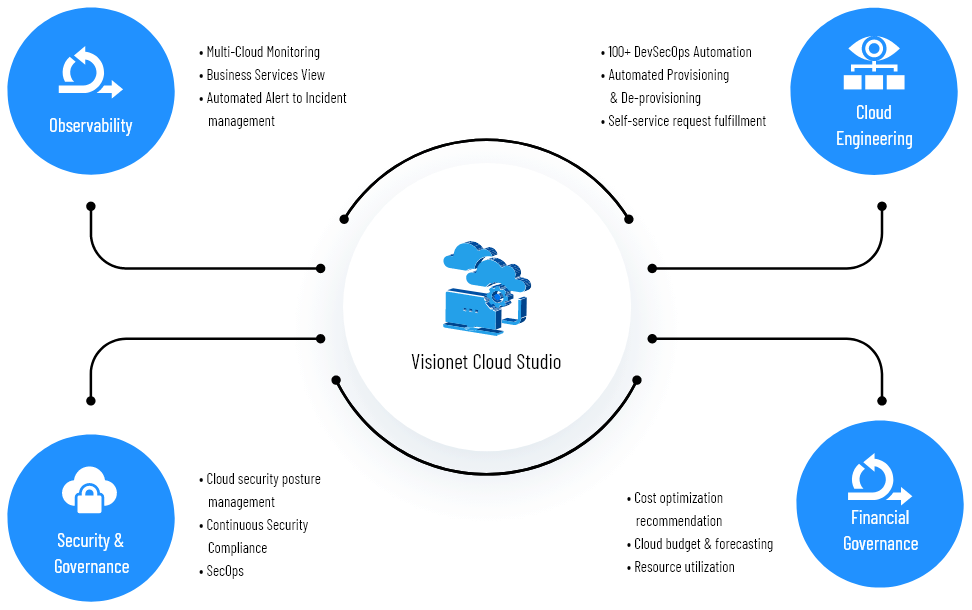
Listen to this blog
According to statistics, multi-cloud management is one of the biggest enterprise challenges with cloud security, cost-optimization, and data integration at the top of the list. While a multi-cloud strategy is quite successful and is the future, managing it is easier said than done.
So how do you manage a multi-cloud environment? In this article, we will shed some light on the capabilities required to combat multi-cloud challenges, without compromising agility and innovation.
Core Capabilities Required to Overcome Multi-Cloud Challenges
Firstly, the survey suggests that most organizations are reaping the benefits of a multi-cloud strategy (92%) and 82% already have a hybrid cloud infrastructure in place. They are relying on both public and private clouds.
Enabling a Software-Defined Data Center (SDDC)
Let’s consider a private cloud environment. To be able to devise a flexible and scalable private cloud, it is a good idea to virtualize computing, storage, and networking. Doing so will create a modern Software-Defined Data Center (SDDC). With SDDC and smart automation in place, you can attain the required agility and unify management to drive innovation.
To enable true cross-cloud portability, Visionet Cloud Services provides SDDS on partner platforms such as Amazon Web Services (AWS). This allows you to utilize your teams’ current skills and capabilities instead of investing in new ones. Even if you have your workloads on Microsoft Azure or AWS, it helps you easily protect and connect workloads, irrespective of their location. Our cloud services pave the way for the security and compliance required to protect your valuable cloud data.
Utilizing a State-of-the-Art Cloud Management Platform
Another important aspect of a multi-cloud strategy is a sound cloud management platform. A unified approach that helps you easily discover and manage your workloads and ultimately provides you with better financial governance.

Some cloud customers might want a consistent and steady approach to various cloud environments, while others want to access proprietary services directly. In either case, you need proper visibility into their cloud consumption and the costs associated with it. The combination of our powerful accelerator Visionet Cloud Studio and a robust network security platform brings all cloud environments under one roof and treats them as a single virtual cloud.
It provides you with a turnkey solution to accelerate IAAS adoption and allows you to channel your resources on strategic aspects such as providing full environments as a service. It contains all the required security and networking needs.
Containerization and Kubernetes
Demand for PAAS is seeing a significant increase as well. Now, PAAS can be unstructured (containerization), where you are developing a Kubernetes stack. It can also be structured like Cloud Foundry. In it, the native app capabilities are pre-packaged into one solution. Cloud consumption is powered by APIs and used by the cloud infrastructure as a code. What is required is utilizing and supporting both consumption models and implementing the desired APIs across multi-cloud environments.
Takeaway
Developing a single virtual stack empowers organizations to cater to all organizational needs and support all types of development methodologies such as Waterfall, Agile, and DevOps. Do you need help tailoring your multi-cloud strategy that is in sync with your organization’s objectives but in two minds about where to start? Visionet Cloud Services can help you transform, secure, and run scalable, high-performing, efficient, and cost-effective cloud environments in just 8 weeks.
Get in touch with Visionet today and get cloud-ready in no time.



